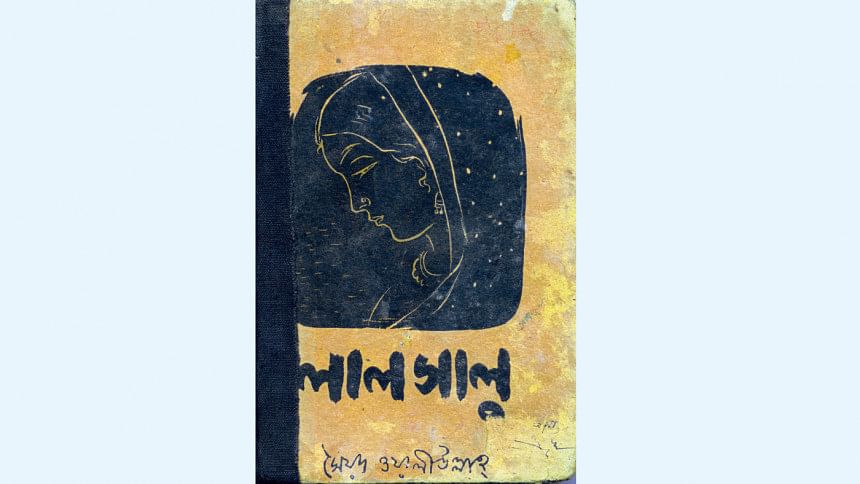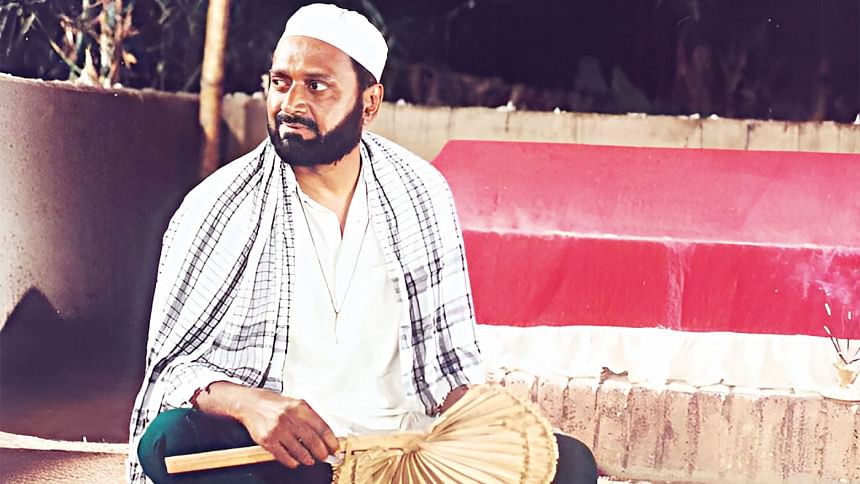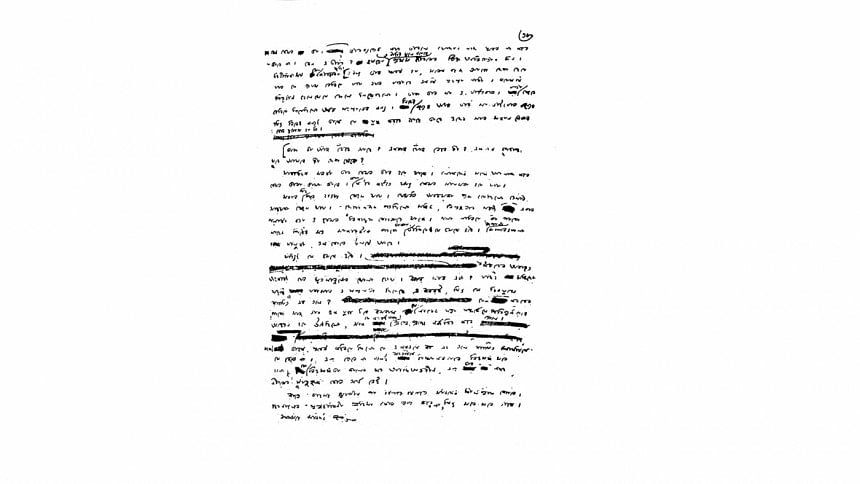Syed Waliullah's (1922-1971) debut novel Lal Shalu drew significant attention upon its release but faced mixed reviews, including outright rejection. Since then, it has been translated into multiple languages, adapted for the stage, and made into a film. Today, it is regarded as the first major modern novel by a Bengali Muslim writer.
Waliullah, a novelist, short story writer, and playwright, was influenced by world literature, yet much of his work centred on the Bengali Muslim experience. Despite spending much of his life abroad, he captured the authentic experiences of Muslims in Bengal with remarkable precision. Before he began writing the novel, Waliullah was an aspiring writer and student, who wrote to Syed Afshar Uddin Ahmad, editor-in-charge of Sawgat, expressing his passion for writing about the 'Muslim Samaj.' His first novel reflects this ambition.
Writing Lal Shalu
Syed Waliullah published Lal Shalu at the age of 26. His first book, Nayanchara, a collection of short stories, was released in Calcutta in 1944 while he was still a student. Though he began writing Lal Shalu in Calcutta, he completed it in Dhaka after migrating due to the Partition of Bengal in 1947. The Partition, marked by famine, disease, religiously driven mass migration, and riots, created immense tension. During this turbulent period, Waliullah produced several significant short stories, including the renowned Ekti Tulasi Gachher Kahini (A Tulsi Plant's Tale), a distinguished work of Partition literature.
Unlike many novels of the time, Lal Shalu was published directly as a book rather than first appearing in periodicals. After completing the draft, Waliullah would read sections at Ajit Guha's home in Wari, Dhaka, where literature enthusiasts gathered. He welcomed constructive criticism and was willing to revise the text based on feedback.
The novel was published in June 1948 by Comrade Publishers in Dhaka, entirely funded by Waliullah himself. Out of 2,000 printed copies, only about 200 were sold, with the remainder discarded as waste paper, leaving Waliullah with a financial loss. According to Syed Abul Maqsud, Waliullah had limited opportunities to promote the book as he moved to Karachi shortly after its release and faced difficulties in finding distributors.

In 1961, Syed Waliullah was awarded the newly established Bangla Academy Award, a highly prestigious honour at the time. Lal Shalu was translated into Urdu in 1960 and French in 1963, likely boosting its popularity. When Kathabitan Publications released the second edition in 1960, the novel gained widespread recognition, with six editions published within just seven years. The English translation, Tree Without Roots (1967), was supported by UNESCO and is best described as a transcreation by Waliullah himself, who also designed the cover. The novel's inclusion in school textbooks as a rapid reader further increased its recognition after its initial release.
A.K. Nazmul Karim, a lifelong friend and sociologist, reflected on Waliullah's shift from short story writer to novelist, recalling their deep literary discussions during the creation of Lal Shalu. He wrote:
Waliullah often expressed his desire to move beyond short stories and venture into novel writing, emphasising that his novel had to be grounded in realism. While in Calcutta, he worked at The Statesman, but, finding no similar newspaper in Dhaka, he took a government job at Radio Pakistan. We frequently met after work, where he passionately discussed his determination to lead a new wave of literary creation in East Pakistan. Our conversations often also included reflections on my studies in social science and rural life.
The opening section of Lal Shalu highlights what Nazmul Karim described as Waliullah's sharp observational skills in depicting rural life and its complexities. In this passage, Waliullah vividly portrays the intricate social fabric of Bengali Muslim village life, focusing more on narrative than dialogue. He explores the community's challenges, such as poor agricultural output, an overdependence on religious practices, and the reasons behind migration. This is encapsulated in one of the novel's most memorable lines: "There are more tupis (prayer caps) than crops, and the bushes grow thicker than religion." Characters like Majeed, who uses his limited self-taught knowledge of Islam to build a career as a Pir, exemplify the complex social structures Waliullah sought to portray in the village of Mahabbatnagar. This complexity is symbolically reflected in the central image of Lal Shalu—the red cloth draped over the Mazar.

The Plot of Lal Shalu
The story of Lal Shalu opens with Majeed's dramatic arrival in the village of Mahabbatnagar. Before this, he had been forced to leave his own village due to food shortages caused by overpopulation, harsh natural conditions, and river erosion—similar to the situation in the Noakhali region where Waliullah's father was born.
Majeed spent some time in the Garo Hills, working as a muezzin, trying to "enlighten" the "illiterate" and "infidel" locals. His life there was lonely and difficult, prompting him to move on, eventually settling in Mahabbatnagar. Upon arriving, he claimed an abandoned and dilapidated grave, declaring it to be the resting place of Modaccher Pir, asserting that he had been sent by the Pir himself through a dream.
The villagers, having long neglected the grave, were chastised by Majeed for their irreligious behaviour. Feeling guilty and repentant, they accepted Majeed's claim and were grateful that the grave of such a revered figure had been rediscovered. They quickly cleared the jungle around the grave, transforming it into a Mazar. With Majeed's guidance, the village saw improved agricultural yields and began practicing Islam more devoutly. His influence soon became central to the villagers' lives, with the Mazar serving as a hub for religious activity and social interactions.
Strategically, Majeed formed an alliance with Khalekh Bepari, the village's most powerful figure, who controlled large tracts of land and wielded authority over local affairs. This partnership was mutually beneficial, as it allowed them to share power, with Khalekh overseeing worldly matters while Majeed presided over religious life. Together, they exerted significant influence, creating a balance between spiritual and practical leadership within the community.
Majeed was ruthless and a master strategist, always prepared to eliminate any threat to his dominance. One of his boldest moves was to delegitimize a rival Pir who regularly visited nearby villages after harvest. Majeed exposed this Pir's un-Islamic practices, thereby tightening his control over Mahabbatnagar. A more subtle challenge came from Akkash, who sought to establish a school to modernise the rural population. During a village meeting to discuss Akkash's proposal, Majeed swiftly undermined him by questioning his authority, even pointing out that he lacked a beard. This effectively silenced Akkash, preventing him from voicing his plans. Instead, Majeed proposed building a grand mosque, encouraging the villagers to contribute either financially or through their labour, a suggestion that was enthusiastically accepted. However, two key events—the rival Pir's arrival and Akkash's school proposal—are notably omitted from the English translation Tree Without Roots.
Majeed's wife, Rahima, was deeply loyal, viewing him not only as a powerful Pir but also as an exceptional husband. As a childless woman, she once expressed a desire to adopt Hashunirma's child, but Majeed disapproved, arguing that without a blood connection, adoption held no real value. Although he often desired Hashunirma, he restrained himself. Despite his elevated position and twelve years of dedicated effort, Majeed frequently felt insecure about his future and his accomplishments, haunted by an underlying sense of unease.
Ultimately, Majeed married Jamila in his quest for children, hoping to find fulfilment in his family life, economic ventures, and religious aspirations. However, the most unexpected challenge he faced came from Jamila in ways he could never have foreseen. After overcoming numerous external obstacles, Majeed now found himself grappling with internal conflicts following the arrival of his young wife.

Jamila was a joyful and vibrant woman who laughed openly and formed a warm bond with her co-wife, Rahima. She had a habit of going to bed early, which Majeed disapproved of, prompting him to pressure her into performing her Namaz regularly. Determined to exert control over her, Majeed leveraged his authority as the custodian of the Mazar to impose religious duties upon her. While Jamila did not intentionally defy Majeed, his attempts to dominate her ignited a rebellious spirit within her, albeit without any clear strategy. Throughout the story, Jamila never addressed Majeed directly, choosing instead to communicate through Rahima.
In a dramatic turn of events, even Rahima, Majeed's most loyal follower, dared to defy his orders when Jamila's life was at stake. Despite Majeed's insistence on prioritising the harvest, Rahima chose to prioritise Jamila's safety after Majeed had cruelly punished her by forcing her to spend an entire night alone in the Mazar during a natural disaster. In an act of protest, Jamila spat in Majeed's face—an instinctive reaction that shattered his sense of control and symbolised the collapse of his external authority. The novel concludes with the ominous onset of heavy rains, thunderstorms, and the looming threat of catastrophic floods, foreshadowing Majeed's final reckoning with the self-deceptions he had constructed around himself.
Style and reception
Waliullah masterfully depicts characters, events, and the natural world, all while subtly weaving in a positivist undercurrent when Majeed briefly contemplates exposing the Mazar as a fabrication. Majeed believes that if he reveals the truth, the villagers will recognise their folly, prompting him to consider leaving the village altogether. He is often taken aback by the sight of the Mazar, which he perceives as resembling the "rear of a fish," standing as a testament to what he has achieved through deceit. This portrayal has led many readers to interpret the novel as a tale of a false Pir exploiting an uneducated rural Muslim community in Bengal for personal gain through a contrived Mazar.
Poet Ahasan Habib wrote one of the earliest and most critical reviews of Lal Shalu, asserting that Waliullah attained the status of a first-class writer through this work. He particularly praised Waliullah's portrayal of Muslim life, highlighting the frustration and deprivation reflected in the mentality of the main protagonist, Majeed. He wrote:
The hallmark of a great artist is the ability to present their creation in its diversity and entirety. Majeed is portrayed as a complex figure, driven by greed and anger; while his ambitions stem from self-interest, his confusion in relationships is equally pronounced. He longs for a fulfilling life—one abundant in love, affection, and wealth. To grasp how he strives to achieve his desires, one must consider not only Majeed's intentions but also the heart of a decaying society. Despite the reprehensible nature of Majeed's methods, he elicits a sense of pity, as the underlying tragedy of his life resonates deeply. This is where the skill of the character creator truly shines. Although Jamila's presence is fleeting, she is the lifeblood of Lal Shalu, and it is uncertain whether the novel would have endured without her.
Ahasan Habib recognised the importance of community and setting in Lal Shalu, which Waliullah vividly depicted. However, he contended that the writer's lack of deeper insight prevented him from fully capturing the entirety of human life in the novel. Nevertheless, Habib emphasised that Lal Shalu is undeniably the first historically systematic novel about the Muslim community authored by a Muslim writer.
Interestingly, Waliullah spent little time living in villages throughout his life, making it all the more surprising how accurately he portrayed the deeply rural existence of Bengali Muslims. As a keen observer and a natural writer, he grasped the dynamics of village life through careful study, as noted by Nazmul Karim.
In 1954, Waliullah wrote to Anne-Marie Thibaud, asserting that it was unnecessary to reside in a village to write about village life; instead, he believed he could critically observe and articulate the experiences of the villagers from a distance. He understood their economic challenges, history, formation, future, and potential without living among them. Had he resided in the village, he would not have aimed to present mere literal or photographic representations of their lives. This perspective illustrates how he understood village life in East Bengal in his novel Lal Shalu, suggesting that his portrayal transcended personal experiences. In describing the essence of Waliullah's inner thoughts, Anne-Marie wrote of her beloved husband:
As a universal citizen, Waliullah viewed all world literature as his own, whether it was the ancient Greek playwright Sophocles, the French philosopher Voltaire, or the Bengali poet Tagore. He absorbed their ideas and methods, applying them to his culture and the Muslim peasants of East Bengal. Through his writings, he endeavoured to eradicate poverty and backwardness among his countrymen. He once told me, "I am a free person; the entire world is mine, whether the universe accepts me or not."
Notably, Rashid Karim, a contemporary novelist of Waliullah, contended that the initial section of Lal Shalu was unnecessary, asserting that the novel would be an unblemished work of art—Waliullah's finest—without it. While most critics viewed the novel as a tale of a fraudulent Pir deceiving ignorant and impoverished rural people, who were blinded by their daily Islamic practices, he vehemently disagreed with this conventional interpretation. Rashid Karim believed that the villagers were neither as naïve nor as easily duped as many suggested. Instead, they perceived Majeed's performative actions as a welcome change from their monotonous daily lives. He also emphasised that the most original aspect of Lal Shalu was its exploration of the complexities of man-woman relationships, a theme that Waliullah handled with remarkable precision.
Interestingly, Anne-Marie Thibaud recalls their visit to Chattogram in 1969-70, during which a party was held in Waliullah's honour at a restaurant. A waiter at the restaurant approached him, asking, "Are you the writer of Lal Shalu?" This unexpected recognition filled him with pride. Yet, even 75 years after its publication, Lal Shalu continues to inspire more nuanced and intriguing interpretations.
Priyam Pritim Paul is a journalist and researcher.


Comments